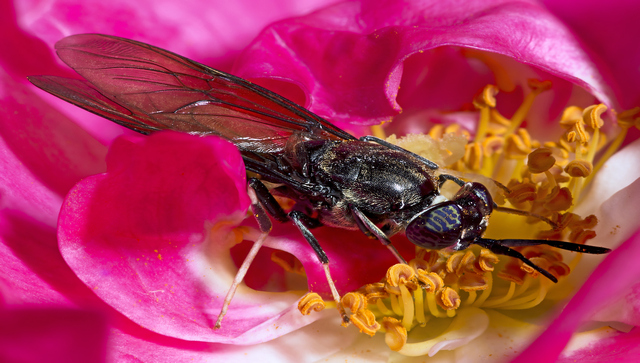Everyone knows that plastic is a problem for the Earth – particularly since it isn’t biodegradable. But now, researchers have claimed that dead flies can be used to make plastic that is biodegradable. But what does this mean? How does it work? Let’s take a closer look: What happened? The findings were presented at the autumn meeting of the American Chemical Society (ACS) – a meeting being held both virtually and in-person that will witness around 12,000 presentations on a host of scientific subjects. The Guardian quoted Karen Wooley, from Texas A&M University, the project’s principal investigator as saying, “For 20 years, my group has been developing methods to transform natural products – such as glucose obtained from sugar cane or trees – into degradable, digestible polymers that don’t persist in the environment.” “But those natural products are harvested from resources that are also used for food, fuel, construction and transportation.” Wooley told the newspaper it was a colleague who proposed that she use leftover waste products from farming black soldier flies. The flies’ larvae – which have proteins and other nutritious compounds – also break down waste.
But adult flies are less useful and are discarded after their short life span.
Wooley and her team have been attempting to employ the carcasses of these adult flies to make plastic from a waste product. “We’re taking something that’s quite literally garbage and making something useful out of it,” says Cassidy Tibbetts, a graduate student on Wooley’s project was quoted as saying by the website Science Blog. How does it work? According to Science Blog, Tibbets found chitin – a nontoxic, biodegradable, sugar-based polymer – as a major component of the dead flies. Chitin strengthens the shell, or exoskeleton, of insects and crustaceans. Chitin is already being extracted from shrimp and crab shells. Tibbets employs similar techniques using ethanol rinses, acidic demineralization, basic deproteinization and bleach decolorization to extract and purify it from the insect carcasses. Researchers said the powder that comes from dead flies seems purer than chitin extracted from crustaceans. This is because it is not the yellowish colour and clumpy texture of the product coming from shrimp and crabs. It could also avoid possible concerns about seafood allergies.
As per The Guardian, the team has already created a hydrogel that can absorb 47 times its water weight in a minute.
This product could be used in cropland soil to capture flood water – and then slowly release moisture during droughts. “Here in Texas, we’re constantly either in a flood or drought situation, so I’ve been trying to think of how we can make a superabsorbent hydrogel that could address this,” Wooley was quoted as saying by The Guardian. “Ultimately, we’d like the insects to eat the waste plastic as their food source, and then we would harvest them again and collect their components to make new plastics. So the insects would not only be the source, but they would also then consume the discarded plastics,” Wooley concluded. With inputs from agencies


)

)
)
)
)
)
)
)
)



